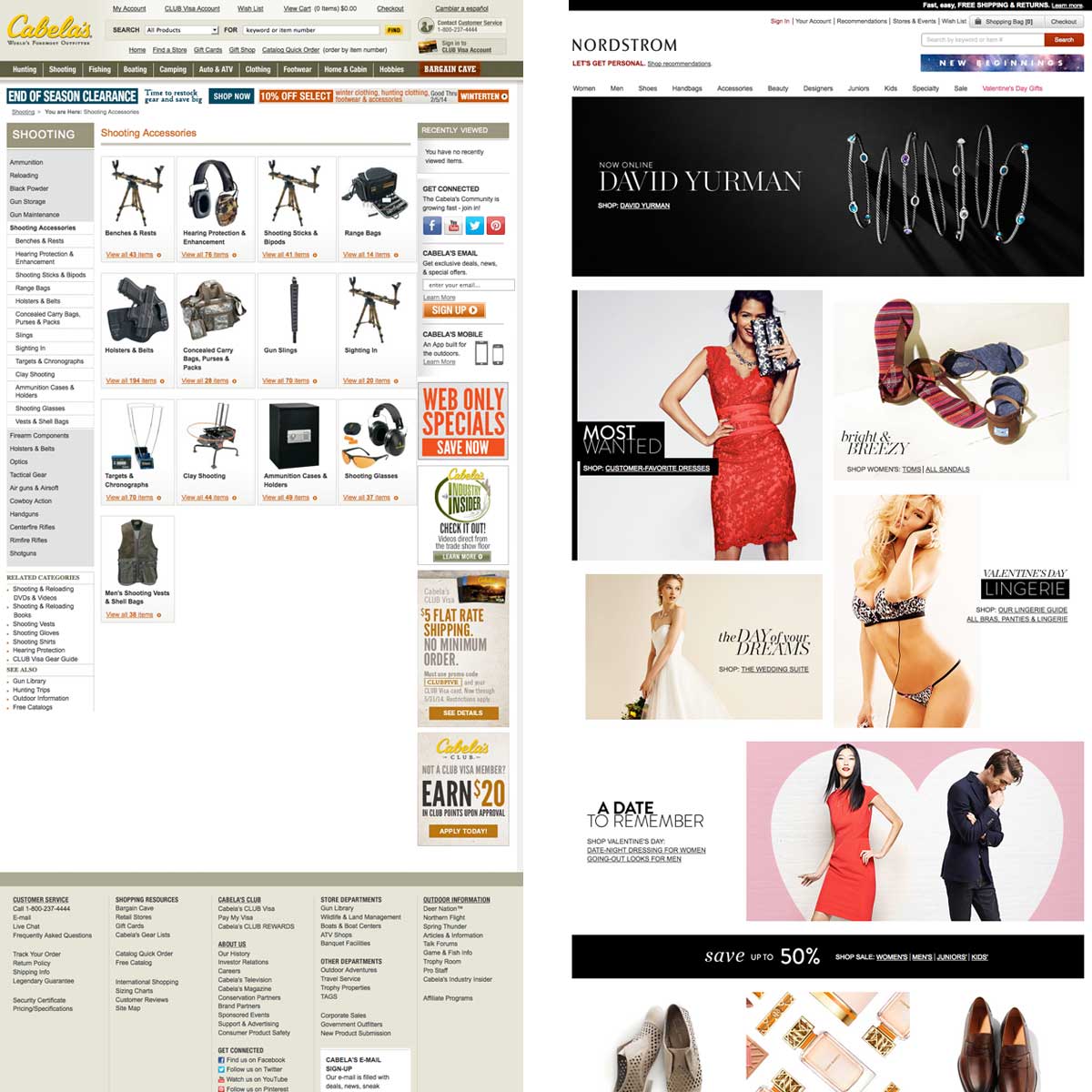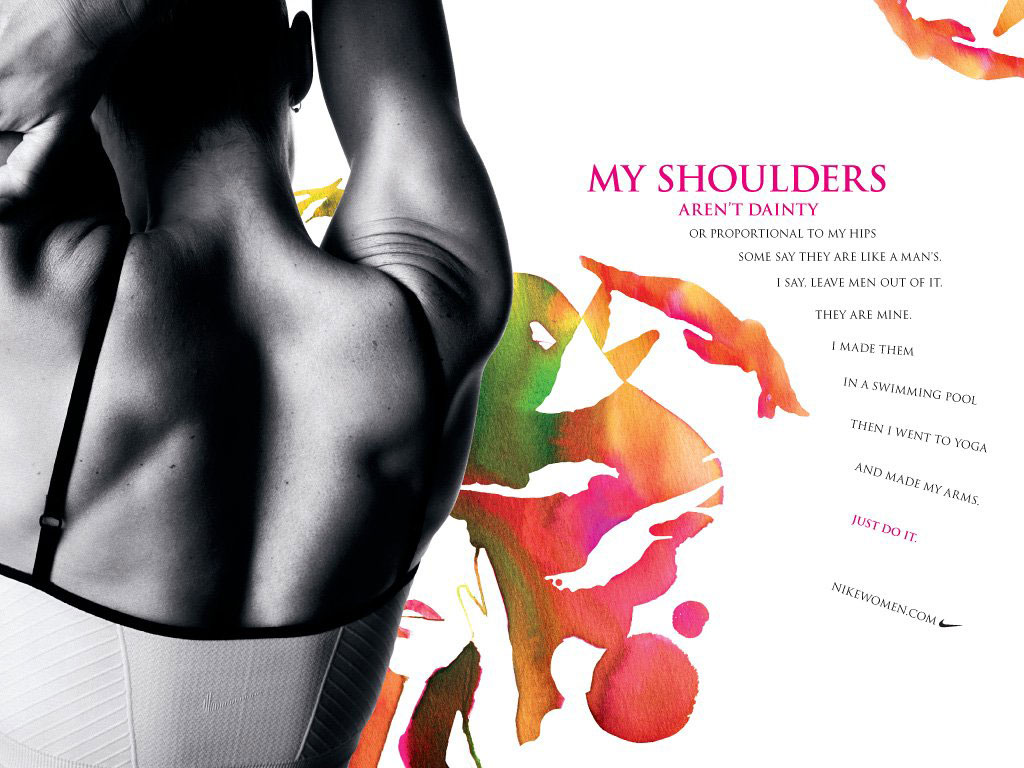6 Strategies for Marketing to Women:
Thinking Beyond "Pink" in the Outdoor Industries
10-minute read — By Andrew BE, M.B.A., and Christina Fitzrandolph, M.B.A.
6 Strategies for Marketing to Women:
Thinking Beyond "Pink" in the Outdoor Industries
Working with businesses in industries which are undergoing significant changes has always been the backbone of our work at Motus. Over the last several years, our interest has been drawn to the significant shift within the firearms industry toward a new female consumer. With our extensive experience and a deep passion for the outdoor industries we have been watching these developments keenly.
An assortment of industry reports have been published over the last several years showing considerable growth in the numbers of women buying firearms, participating in shooting sports, and carrying concealed firearms for personal protection.
One of the most interesting things about these studies is that the women driving this growth are 30-something, urban-dwelling professionals. In an industry where the female consumer has traditionally represented a rural demographic, seeing substantial interest from urban-dwelling, college-educated professionals has been a shift many industry manufacturers were unprepared to address.
 With this demographic shift in mind, we were interested to attend SHOT Show, the world’s largest shooting, hunting and outdoor trade show, which boasts 1,800 exhibitors, 67,000 attendees and 12.5 miles of booths. With such a large showing of companies under one roof, we hoped to witness first-hand how the industry is adapting, innovating and targeting the rapidly-growing female audience. Given that women account for 85% of all consumer purchases, including everything from cars to healthcare, we expected to see a majority of companies and manufacturers taking-note of the groundswell from the female market and striving to adapt to what will become a major market force in the near future.
With this demographic shift in mind, we were interested to attend SHOT Show, the world’s largest shooting, hunting and outdoor trade show, which boasts 1,800 exhibitors, 67,000 attendees and 12.5 miles of booths. With such a large showing of companies under one roof, we hoped to witness first-hand how the industry is adapting, innovating and targeting the rapidly-growing female audience. Given that women account for 85% of all consumer purchases, including everything from cars to healthcare, we expected to see a majority of companies and manufacturers taking-note of the groundswell from the female market and striving to adapt to what will become a major market force in the near future.
However, much to our astonishment, we discovered a near total void of adaptation, innovation, renewed thinking, or any significant indication that a shift in business strategy is occurring.
What did we see? Pink. Every imaginable outdoor product was displayed in fifty different shades of pink: pink knives, pink camo, pink gun cases, pink backpacks, pink rifle parts, pink shotgun shells and, of course, lots of pink guns.
From a strategic point of view, making and marketing a product for men, then making the exact same product “for women” in pink is out-of-touch with the deeper needs and distinctions between a male consumer market and a female consumer market. While these manufacturers are certainly well-intended, the result has a negative effect on the desire to create a more inclusive, consumer-oriented marketplace. Making a product in pink is not seen by women as an indication that their needs are being understood and responded to. It is seen as confirmation that the manufacturers are out-of-touch with their needs.
This problem is not new, it is just new to the firearm industry. Most outdoor industries have struggled with similar adaptation, such as the skiing industry, the cycling industry, and the outdoor clothing industry. Once these industries realized that making and marketing a product for women meant more than a smaller size and more feminine graphics, they began to reexamine their business strategies. The result has been higher satisfaction, greater participation, and larger market-share for companies who deliberately sought to satisfy this customer segment.
The best way to appeal to a female market is to recognize that men and women buy differently, then shift the fundamental strategies of your business to account for these differences. Here are six general business strategies to help your company capture a larger percentage of the female market by offering greater value:
1) Ask what your market wants!
While “ask and you shall receive” sounds overly simplistic, many brands never take the time nor effort to really ask their target market about what is important to them. Take the auto industry, for example: According to a 2010 Forbes study, 74% of women expressed that auto makers do not understand them. That is a huge disconnect between the manufacturers and the consumers; not unlike what the shooting industry is facing with the growing female market.
 As a model of an effective manufacturer-consumer relationship, look to Volvo, who has been active in seeking women’s input since the late ‘80s, and still consistently ranks as one of the most popular vehicles among women. Volvo’s engagement with their market revealed that dependability and safety were paramount to their market’s needs. This caused a shift in their strategy to focus on these key areas, and has manifested in innovations like color-coded fluid lids under the hood and redesigned back seats.
As a model of an effective manufacturer-consumer relationship, look to Volvo, who has been active in seeking women’s input since the late ‘80s, and still consistently ranks as one of the most popular vehicles among women. Volvo’s engagement with their market revealed that dependability and safety were paramount to their market’s needs. This caused a shift in their strategy to focus on these key areas, and has manifested in innovations like color-coded fluid lids under the hood and redesigned back seats.
Volvo did not guess at what their market wanted. They asked, and they took the feedback to heart. What they discovered were tangible and easily-implemented concepts that continue to set them apart as leaders in the auto industry.
2) Think visually
Good design and a visually-pleasing shopping experience are defining characteristics of a female-oriented strategy. Consider the world of e-commerce. While men are happy to navigate charts, grids and lists, women are drawn to uncluttered visuals highlighting the products they want to buy. Plus, women are active in sharing images with their friends through social media sites like Pinterest and Instagram.
Compare these two examples: Cabelas.com, with their three-column layout, busy visuals, product grids, lengthy lists of sub-category navigation and dull color scheme, is clearly a website targeted toward men. Nordstrom.com, on the other hand, has clearly catered to their upscale, urban female market with an elegant black/white/red color palette, large professional photos, an asymmetrical two-column layout, attractive typography, and visual category navigation.

While this is undoubtedly an uneven comparison, it reflects the differences in visual thinking and refined design which can be applied to all aspects of a female-targeted strategy.
3) Answer the question, “What does it do for me?”
Automobiles marketed to men commonly propound figures such as:
- A 4.4-liter, 552-horse power, turbo-charged, eight-cylinder engine, with a 7-speed transmission
- A 3.5-second 0-60 with a top speed of 167 miles per hour
- 4-wheel ABS system and 16-inch rotors
- Multi-link suspension and a 39-foot turn radius
Facts like these are sure to evoke a desire for any man on Earth. But the majority of women reading these figures will be disinterested because the features are not communicated in a way that connects with their values. Metrics and the bullet-point presentation style put the responsibility on the reader to interpret the value behind the features.
On the other hand, a car with elite design, enough power to be exhilarating and fun to drive, as safe as it is stylish, which offers a smooth and comfortable ride, and is easy to handle and park in a crowded parking lot will hold considerably more appeal to women. It’s the same car, but the presentation expresses the value of the design, rather than the features. It answers the question “what does it do for me?”
Marketing within the shooting industry is full of features and rarely speaks to the value of a product. For example, very few women will be interested in spending thousands of dollars on a rifle chambered in 6.5 Creedemoor, with a 60-degree bolt action, a 24-inch free-floating 1:12 twist barrel with an 11-degree horizontally-ported muzzle break, adjustable cheek-weld and length of pull, a 2.5-pound two-stage trigger, topped-off with an 8-24x50mm FFP side parallax adjustment scope. Yet lengthy feature lists like this are exactly how these products are marketed now.
Women would be considerably more interested in a rifle which can be custom-tailored to comfortably fit their body, has a gentle enough recoil for hours of comfortable shooting, has a reliable bolt-action which is light and easy to operate, is extremely accurate even at long ranges, and has a telescopic sight with a bright, crisp view and enough magnification to see even the farthest targets.
As with the car example, this is the same rifle, but in terms which do not require interpretation to associate their value. The presentation directly answers the question “what does it do for me?” without creating a hurdle to overcome.
In business jargon, hurdles like these are called “barriers to entry.” They create an obstacle to learning and participating in a new activity. This can be easily bypassed by simply speaking to the value. Answer the questions “What does it do for me?” and “Why should I care?” Leave the features out of the equation until the consumer is experienced enough to make personal associations between the feature and the value it provides.
4) Organize Functionally
The cycling industry has modeled an important organizational tactic which naturally caters to the way women view products differently from men: Almost all bike shops organize their merchandise by function. Road bikes on this side, mountain bikes on that side, beach cruisers near the front, specialty bikes near the back, and so on. They have recognized that, first and foremost, someone is shopping for a bike to perform a certain function and they strive to tailor the shopping experience accordingly. While they could very well organize by brand name or by size, they understand that would create a barrier for shoppers to easily choose the right product.
When it comes to firearm products, functionality is often assumed rather than communicated. Evidence of this can be found in most gun shops by the racks of rifles organized by brand—or worse, co-mingled randomly—and numerous aisles of ammunition organized by caliber. A brief inspection of the 9-millimeter section of the ammo aisle will reveal dozens of different boxes ranging from $20 to $60 which differentiate themselves only with combinations of short-hand descriptions like luger, parabellum, +P, 115 gr., 147 gr., JHP, FMJ, SXT, RN, and more. This organization style caters to how men shop rather than how women shop. While those classifications, features, and acronyms present a challenge to be conquered in the mind of a man, they create a senseless frustration in the mind of a woman who may very well walk away feeling discouraged and disinterested.
We do not purchase bikes by comparing short-hand references to tire shape and size, gear ratios, frame heights, handlebar styles, and break configurations. Why has that style of organization become standard in the gun shops?
Just as the bike shops have learned, this hurdle can be overcome by simply organizing products functionally. Women usually know what function they want a firearm or accessory to fulfill, and retailers and marketers would be wise to shift their strategies to accommodate their desires.
5) Empower
Nobody likes feeling belittled. Male-oriented strategies often adopt a tone of begrudging acceptance toward women rather than offering empowerment and education that would welcome their participation. At best, they say “Sure, you can play our game,” rather than saying “We want you to make it your game and play it the way you want.”
Nike has become one of the major champions of an empowering strategy, beginning with the launch of the “If You Let Me Play” campaign in 1995 as part of the redevelopment of their strategy to target a female audience.
Nike’s ad campaigns have seen refinement over the years, but the underlying strategy of empowerment has remained rock solid. They have led the women’s athletic apparel industry for nearly 20 years not because they welcomed women into a male-dominated world, but because they supported women having their own ideas about fitness and healthy body-image, and empowered women to make sports what they want them to be.
Nike did not simply “encourage” women to participate. They focused their effort toward helping an underserved consumer claim self-responsibility, gain self-reliance, and increase their self-confidence, which lead to a more educated, self-supporting, and sustainable market.

6) Show Respect
In contrast to Nike’s relatively early recognition that a new strategy was necessary to answer the needs of the female market, it wasn’t until a major sales slump in 2002 that McDonalds began to reassess its female-oriented strategy. Their research revealed that McDonalds was still talking to women as if it were the 1950s, treating them primarily as a conduit to kids. In recognizing this flaw in their “mom marketing,” McDonalds began to solicit and listen to women’s input. They described their research program as the quest to “find the woman inside the mom.” This led to a very successful launch of Premium Salads, healthier Happy Meals and a major overhaul of PlayPlaces to offer more comfortable seating and free WiFi access. These tactics ultimately led to them winning back their most valuable customers.
The shooting industry commonly demonstrate a similar dynamic as the McDonalds example. They tend to treat women as the wives of their customers rather than individuals who have their own thoughts and needs. The modern, independent, 30-something woman perceives this as disrespectful.
How can this be changed? Along with designing products based on the input of women, manufacturers and consumer-level businesses can take a more respectful approach by keeping up-to-date with the interests and needs of women as they evolve. Engineers and product designers should be working hand-in-hand with market research teams on the manufacturing side. Consumer-level businesses should hold special trainings with their staff and marketing team to ensure the right message is being presented.
Aside from working with individual organizations to redefine their strategic direction, our best general advice for those looking to evolve in the shooting industry is: Don’t wait! Even though the picture of the industry in 5 years is somewhat unknown, leading the pack will create a better opportunity to refine your strategy in the future while creating brand-loyalty now. Those who strive to define a new strategy now, will be leading the shooting industry as the groundswell of female consumers begins to fully blossom.
